“Joseph Valachi FBI Files – Congressional Hearings & Other Historical Material” has been added to your cart. View cart

Al Capone: FBI, BOP, IRS & U.S. Attorney Files, News & Books
$19.50
Description
Al Capone: Timeline of Crime and Imprisonment
1926
- April 29, 1926: Earliest newspaper coverage of Al Capone included in the collection, indicating his presence in the public eye.
1927
- 1927: George E.Q. Johnson begins his tenure as the United States District Attorney for the Northern District of Illinois, a period during which he would heavily involve himself in the prosecution of Al Capone and other Chicago criminals.
1929
- March 5, 1929: An affidavit, purportedly from a physician, is filed claiming Al Capone is suffering from bronchial pneumonia in Miami, requesting a postponement of his appearance before a Federal Grand Jury.
- March 1929: FBI investigation reveals Capone attended racetracks in Miami, traveled to Bimini and Nassau, and appeared in good health when interviewed by the Dade County Solicitor, contradicting his physician’s affidavit.
- March 20, 1929: Al Capone appears before the Federal Grand Jury in Chicago.
- March 27, 1929: Al Capone completes his testimony before the Federal Grand Jury and is immediately arrested by FBI agents for contempt of court as he leaves the courtroom. He posts a $5,000 bond and is released.
- May 17, 1929: Al Capone and his bodyguard are arrested in Philadelphia for carrying concealed deadly weapons.
- May 17, 1929 (within 16 hours of arrest): Capone and his bodyguard are sentenced to one-year terms for carrying concealed deadly weapons in Philadelphia.
- 1929: John Landesco’s monograph “Organized Crime in Chicago” is published as part of “The Illinois Crime Survey,” detailing the interlocking interests of crime and corruption in Chicago and frequently mentioning Capone.
- 1929: Armitage Trail writes the novel “Scarface,” heavily inspired by Al Capone’s life.
1930
- March 17, 1930: Al Capone is released from prison after serving nine months of his one-year sentence for good behavior (arrested May 17, 1929, released after 9 months).
- 1930: “Scarface” by Armitage Trail is published.
- 1930: “Chicago Gang Wars in Pictures: X Marks the Spot,” a booklet documenting the Chicago underworld, is published.
1931
- 1931: The IRS Intelligence Unit utilizes an undercover agent to gather evidence against Al Capone for tax evasion.
- 1931: Al Capone is convicted of tax evasion, sentenced to 11 years in federal prison, fined $50,000, and ordered to pay $215,000 plus interest on back taxes.
1932
- 1932: George E.Q. Johnson concludes his term as United States District Attorney.
- 1932: The film “Scarface,” based on Armitage Trail’s novel, is released.
1933
- 1933: Roger Touhy is framed for the faked kidnapping of John “Jake the Barber” Factor, leading to his long imprisonment.
1934
- 1934: Al Capone, incarcerated at the United States Penitentiary at Atlanta, sends a handwritten letter to the warden seeking improvements in privileges.
1936
- February 28, 1936: Al Capone is found guilty in Federal Court on the contempt of court charge (from 1929 arrest) and sentenced to six months in Cook County Jail.
- 1936: Al Capone’s mother, Theresa Capone, sends a handwritten letter to Sanford Bates, Director of the Federal Bureau of Prisons, expressing concern over attempts on her son’s life in Alcatraz.
1938
- June 1938: An Alcatraz neuro-psychiatric examination report diagnoses Capone with “Psychosis with General Paralysis of the Insane: Expansive type.”
- 1938: Al Capone sends a typed letter to his son, Al Jr., then a student at Notre Dame University.
1939
- January 17, 1939: Capone is transferred from Alcatraz to Terminal Island Federal Prison, and a psychiatric examination report is conducted.
- September 13, 1939: Another psychiatric examination report is conducted on Capone at Terminal Island Prison, shortly before his release.
1951
- 1951: The Kefauver Committee Report on Organized Crime is published, identifying a “sinister criminal organization” (later known as La Cosa Nostra) operating in the United States, with 95 mentions of Capone.
1959
- 1959: Roger Touhy’s autobiography, “The Stolen Years,” co-written with Ray Brennan, is published while Touhy is in prison.
- 1959: John Factor sues Roger Touhy for libel due to statements in “The Stolen Years.”
- November 1959: Roger Touhy is released from prison after 26 years.
- Less than a month after November 1959 release: Roger Touhy is murdered by the Chicago Outfit.
1962
- 1962: Irving Kupcinet’s book “Kup’s Chicago,” which includes an excerpt dealing with Al Capone, is published.
1963
- 1963: J. Campbell Bruce’s “Escape from Alcatraz; a Farewell to the Rock” is published, mentioning Capone throughout.
- October 2, 1963: Latest newspaper coverage of Al Capone included in the collection.
Cast of Characters
- Alphonse “Al” Capone: The central figure of the collection, an infamous Chicago mob boss and prohibition-era bootlegger. He was known by the nickname “Scarface” and was investigated by the FBI, prosecuted by the IRS for tax evasion, and served time in federal prisons including Alcatraz and Terminal Island. His life and criminal activities are the primary focus of the documents.
- Frank Capone: Al Capone’s brother, mentioned in the FBI files. (No further details provided in the excerpts).
- Ralph Capone: Al Capone’s brother, mentioned in the FBI files. (No further details provided in the excerpts).
- Frank Nitti: Mentioned in the FBI files. (No further details provided in the excerpts, but known as a prominent figure in the Chicago Outfit).
- Theresa Capone: Al Capone’s mother. She wrote a handwritten letter to Sanford Bates, Director of the Federal Bureau of Prisons, expressing concern about attempts on her son’s life in Alcatraz in 1936.
- Al Capone Jr. (“Al Jr.”): Al Capone’s son, a student at Notre Dame University in 1938, who received a letter from his father while he was in prison.
- Sanford Bates: Director of the Federal Bureau of Prisons, to whom Theresa Capone wrote in 1936 regarding her son’s safety.
- Frank J. Wilson: IRS Special Agent, known as the “father of forensic accounting.” He was instrumental in gathering evidence against Al Capone, leading to his conviction for tax evasion.
- George E.Q. Johnson: United States District Attorney for the Northern District of Illinois from 1927-1932. He compiled scrapbooks of newspaper clippings related to his professional and personal life, including many articles concerning the prosecution of Al Capone and other Chicago-area criminals.
- John Landesco: Sociologist (1890-1954) and research assistant for the American Institute of Criminal Law and Criminology. He authored “Organized Crime in Chicago” (1929), a detailed study of organized crime, gambling, bootlegging, vice, and politics in Chicago, with numerous mentions of Capone.
- Armitage Trail: Author of the novel “Scarface” (1929), which was heavily inspired by Al Capone’s life. He died suddenly in 1930.
- Tony “Scarface” Guarino: The fictional main character of Armitage Trail’s novel “Scarface,” whose rise and fall is modeled after Al Capone.
- Al Springola: A fictional mob leader in Armitage Trail’s “Scarface,” whose hit is performed by Tony “Scarface” Guarino.
- Estes Kefauver: Democratic Senator from Tennessee who led a U.S. Senate committee in 1951, known as the Kefauver Committee, which determined the existence of a “sinister criminal organization” (later known as La Cosa Nostra) in the United States. His report mentioned Capone.
- Roger Touhy: (1898–1959) An Irish American mob boss and Prohibition-era bootlegger from Chicago, and a rival of Al Capone. He was famously framed for the 1933 faked kidnapping of John “Jake the Barber” Factor and spent 26 years in prison. He co-authored his autobiography, “The Stolen Years,” and was murdered by the Chicago Outfit shortly after his release.
- Ray Brennan: Co-author of Roger Touhy’s autobiography, “The Stolen Years” (1959).
- John “Jake the Barber” Factor: A gangster and brother of cosmetics manufacturer Max Factor Sr. He was the subject of a faked kidnapping in 1933 for which Roger Touhy was framed. Factor later sued Touhy for libel over statements in Touhy’s autobiography.
- Irving Kupcinet (“Kup”): American newspaper columnist for the Chicago Sun-Times, television talk-show host, and radio personality. His 1962 book “Kup’s Chicago” included an excerpt dealing with Al Capone.
- J. Campbell Bruce: Author of “Escape from Alcatraz; a Farewell to the Rock” (1963), a book about the history of Alcatraz that mentions Capone.














Related products
-
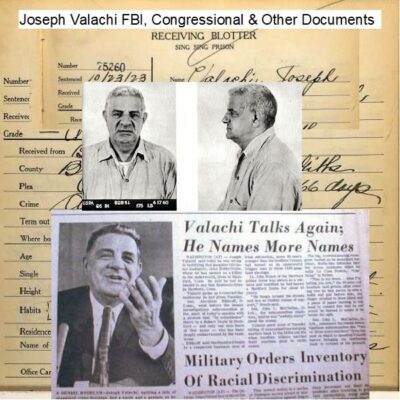
Joseph Valachi FBI Files – Congressional Hearings & Other Historical Material
$19.50 Add to Cart -
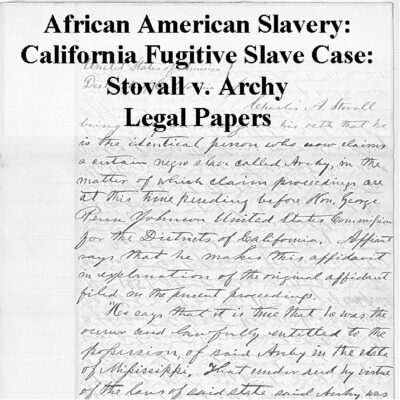
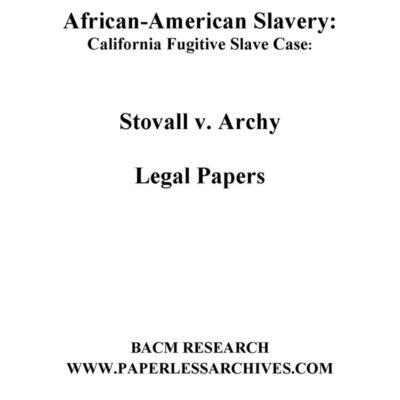
Legal Papers from the California Fugitive Slave Case: Stovall v. Archy
$4.99 Add to Cart -
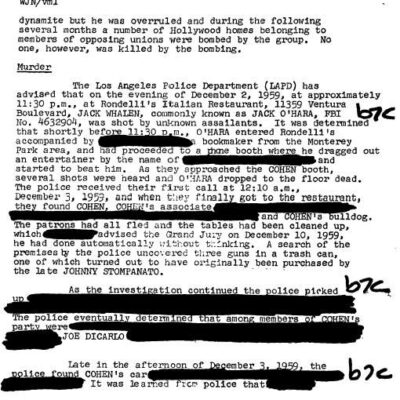
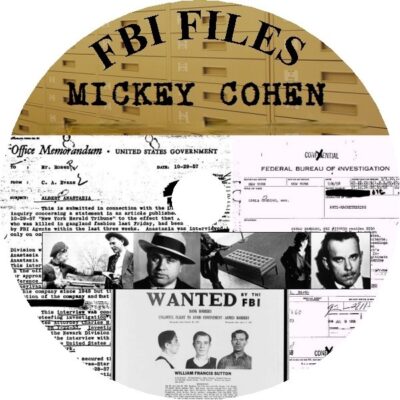
Mickey Cohen FBI Files
$19.50 Add to Cart -
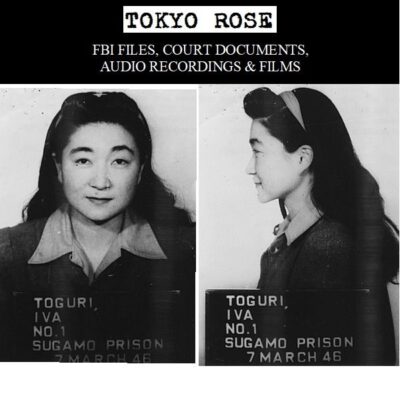
Tokyo Rose FBI Files, Court Documents, Audio Recordings & Films
$0.00 Add to Cart